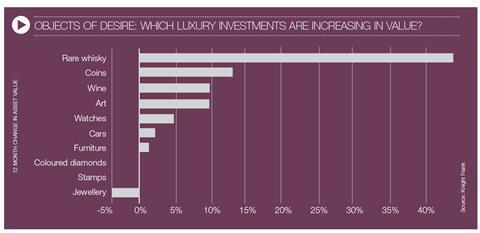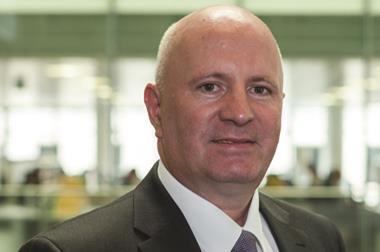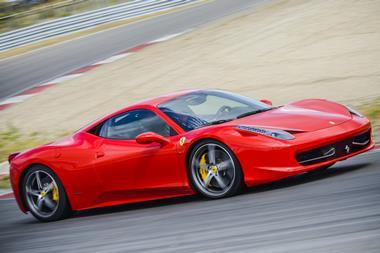Wealthy collectors splash the cash on rare Scotch, while London’s ultra-high net worth stick to bricks and mortar
Whisky featured for the first time in the Knight Frank Luxury Investment Index in 2019, with values surging by 40% year-on-year, according to the Wealth Report 2019.
The new luxury asset investment beat coins, watches, art, classic cars and wine as the value of rare Scotch whisky rose by almost 600% over the past decade.
Asian HNW investors are particularly keen. Sales of Scotch whisky to India, China and Singapore have risen by 44%, 35% and 24% respectively, according to the Scotch Whisky Association.
“Rare whisky collectors are not only tracking down individual bottles, but also seeking their own casks and are prepared to pay six or seven-figure sums to get them,” said Wealth Report editor Andrew Shirley.

London property soars
Meanwhile, amid Brexit uncertainty, London’s ultra-HNW individuals are investing in real estate, with 2018 witnessing the highest number of £20m-plus deals in the capital since 2014. Notting Hill and Mayfair are the two areas where transaction volumes grew over the 12 months to January.
There has also been an uptick in contract works since stamp duty changes were introduced in 2016 in an attempt to curb second home ownership.
“We’re finding that many individuals are investing money into their home rather than moving, perhaps converting outbuildings or adding a new garden room, for instance,” said Lycetts private client account executive Guy Baxter.
“A lot more people are also looking to take an income from their home and land, with the UK holiday letting market really taking off.”
When luxury properties are renovated, the onus is on brokers to talk regularly to clients to ensure they have the right cover.
“Although there may be a limit on HNW policies where you don’t need to refer to the insurers, if clients are going to do £50,000 or £100,000 worth of work they need to make sure those works are insured and not assume the builder is adequately insured,” said Baxter.
“So we’re encouraging clients to talk to us as soon as possible, even in the planning stage.”
Keep jewellery valuations up to date
In June, the Maharajas & Mughal Magnificence auction at Christie’s New York set new records, fetching £87m ($109.3m), the highest amount ever for an auction of Indian art and Mughal objects, and the second highest for a private jewellery collection.
Almost 400 lots were offered, including Golconda diamonds and jewelled objects once used in the royal courts.
At a time when areas of the jewellery market have shown considerable growth, Sonia Fazlali-Zadeh, jewellery specialist and valuer at Gurr Johns, stressed the importance of encouraging HNW clients to get regular professional valuations. There have been big price fluctuations for diamonds, especially.
“Pay particular note if diamond jewellery was previously valued between 2015 and 2018, as they are very likely to be undervalued. Since then, the market has picked up and prices have increased, especially in the larger carat weights.
“If the valuation is old, they may be even more undervalued as one of the biggest hikes was seen between 2005 and 2010.
“In many cases items are insured at their purchase price,” she added. “For example, an item such as an engagement ring that may have been purchased many years ago.
“Clients often do not keep on top of how the market and exchange rate fluctuations impact the price of jewellery and are often unpleasantly surprised [in the case of a loss] to find out that the cost of a like-for-like replacement is significantly more now. In addition to the sentimental impact, they face being out of pocket too.”
Subscribers read more
Five-Star Q&A Home & Legacy: “Brokers know us to be a reliable HNW specialist”

Hosted by comedian and actor Tom Allen, 34 Gold, 23 Silver and 22 Bronze awards were handed out across an amazing 34 categories recognising brilliance and innovation right across the breadth of UK general insurance.




















































No comments yet